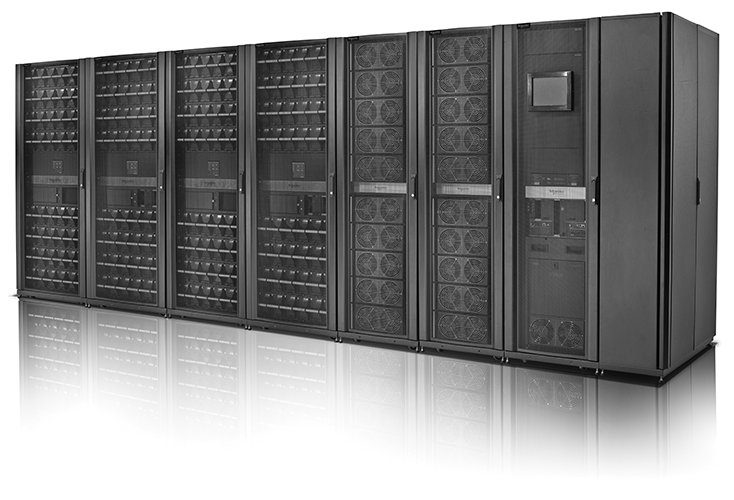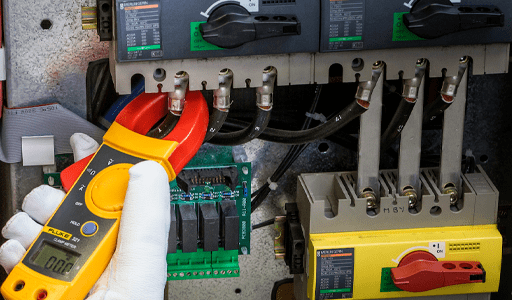Modular UPS Systems Versus Standalone UPS Systems
Snowballing power requirements, improved component technology along with increasing user demand over the past five years have now driven modular UPS systems to be designed, specified, and supplied by all the leading UPS manufacturers.

“Anti” modular UPS arguments no longer make sense…
Where once modular UPS was frowned upon for being “unreliable” either because of an increased component count over standalone units, a single point of failure on the output static switch or redundant power modules only having a single controller, modular UPS are now a seen as the elite of UPS technology and the future of the industry.
Complex switching algorithms controlling the accuracy of load sharing between tens of power modules all connected together, show efficiency increases and also prevent circulating electrical current prematurely ageing components. Centralised or decentralised static switch technology now overrides the single point of failure argument. Static switch modules can now be removed and replaced “live” while load continues to be powered by the UPS inverter and the DSP controllers located on each module with redundant frame controllers allow power modules to be hot swapped or even removed without interruption to the load.
Maintenance and service
During the service and maintenance period of a UPS, the connected loads are normally transferred to bypass (raw mains power) for safe working requirements. During this time the connected equipment is without any power protection and vulnerable to any mains electricity variations.
Is my UPS really standalone?
Many “standalone” UPS systems, also referred to as “monolithic” or “solid state” by vendors are actually made up of internal components set out in a modular layout. Some manufacturers contain a number of physical modules with a single display and control screen with one covering front door, others have the internal components set out in a number of smaller power ratings which are then connected in parallel. One of the reasons for this is now the sheer scale volume in production of smaller switching semiconductor components compared to the lower number of larger semiconductor components. The vast scale of production means using three or four times the number of components is still more cost effective than using larger semiconductor devices. The components can also be set out more efficiently for heat dissipation saving physical space and increasing power density of the unit. It also reduces production time for the UPS manufacturer as only a limited number of power ratings need to be sourced and stocked. Therefore, You may find that your standalone UPS is actually of internal modular design and construction anyway.

Low Loading Efficiency
When a UPS is first specified, it is nigh on impossible for a user to know the total loading throughout the UPS service life, especially where the UPS supports a growing infrastructure company such as a colocation datacentre. Even when the load is accurately calculated and achieved, a “safety” factor is added to the load in order to to size the UPS in event of of any overload conditions, future server upgrades or unbalanced deployment of load across the output phases.
Like any electrical device a UPS would usually be most efficient operating at 100%, but this is neither practical nor possible in reality. While standalone UPS have been optimised to provide high efficiencies at mid loadings, the user will have to choose between future power availability or maximum efficiency, based on the capacity installed on day one.
Advanced modular UPS allow a certain number of modules to be hibernated or switched off if the load decreases or is initially lower than expected, not only does this add extra redundancy but it also allows the other power modules to run at a more efficient loading. To ensure all modules “age” at the same rate, modules can even be cycled to utilise all components for the same period of time. If the loading is not as expected or decreases, the user can physically remove modules as required.
Growth
Power modules are usually mounted into a UPS frame, which may contain a manual bypass switch, main controllers and static switch depending on the manufacturer. While the frame size along with the supply switchgear and cabling determines the total growth in power, a user can start with a lower number of power modules and add further modules, as and when load requirements increase. Thought should be given to the correct mains supply protection for day one capacity and future additional battery requirements, but if these are considered, modular UPS can be deployed as they are marketed on a “pay as you grow” or “scale up as required” basis. Users should ensure that the same modules will still be available from the manufacturer when required.

Cost
The cost effectiveness of modular UPS against standalone units completely depends on the power infrastructure requirements. For example if a user simply requires a 200kVA UPS, then a standalone unit will be more cost effective than a modular UPS frame with four x 50kVA power modules. If however the user requires an element of redundancy, then five x 50kVA power modules in one frame will usually be more cost effective than two x 200kVA standalone UPS. The physical space requirement, electrical supply and battery configuration will also be massively reduced.
Conclusion
Modular UPS systems are now dominating the mainstream marketing of the large UPS manufacturers and analysts predict the future market growth rate of modular UPS to overtake traditional standalone systems. To determine which technology will be the most resilient, efficient and cost effective for use, the user and sites requirements should be carefully considered. If the resilience and efficiency required are within acceptable limits from both technologies, it may be a choice of upfront purchasing costs (CAPEX) where standalone may be better vs the operating costs (OPEX) over the lifetime of the UPS. The future servicing and electricity costs along with manufacturer support and availability should also be considered.
There are advantages and drawbacks for both technologies and each site requirement will differ, so discussing your particular power protection requirements with an experienced, helpful and honest UPS specialist such as UPS Power Services will assist in determining which is the correct choice for you.
